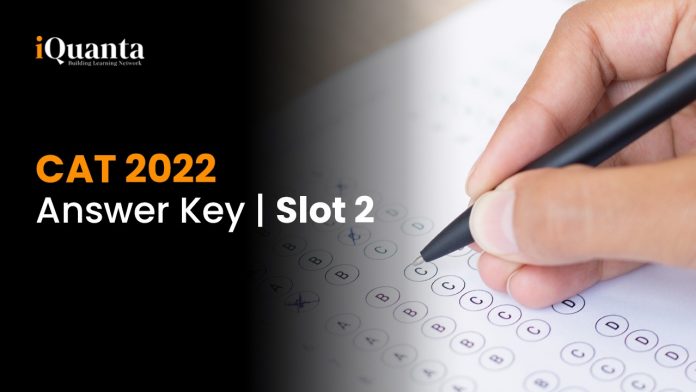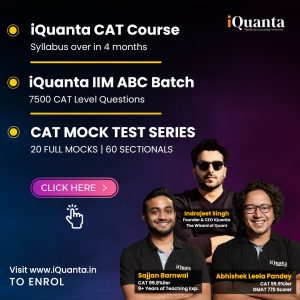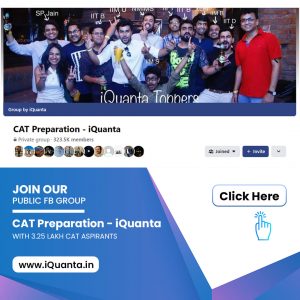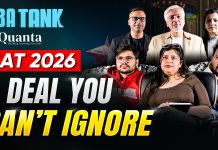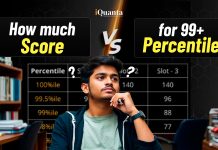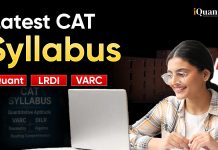CAT 2022 Slot 2 Answer Key
Section 1 : Verbal Ability & Reading Comprehension
RC 1 :
When we teach engineering problems now, we ask students to come to a single “best” solution defined by technical ideals like low cost, speed to build, and ability to scale. This way of teaching primes students to believe that their decision-making is purely objective, as it is grounded in math and science. This is known as technical-social dualism, the idea that the technical and social dimensions of engineering problems are readily separable and remain distinct throughout the problem-definition and solution process.
Nontechnical parameters such as access to a technology, cultural relevancy or potential harms are deemed political and invalid in this way of learning. But those technical ideals are at their core social and political choices determined by a dominant culture focused on economic growth for the most privileged segments of society. By choosing to downplay public welfare as a critical parameter for engineering design, we risk creating a culture of disengagement from societal concerns amongst engineers that is antithetical to the ethical code of engineering.
In my field of medical devices, ignoring social dimensions has real consequences. Most FDA-approved drugs are incorrectly dosed for people assigned female at birth, leading to unexpected adverse reactions. This is because they have been inadequately represented in clinical trials.
Beyond physical failings, subjective beliefs treated as facts by those in decision-making roles can encode social inequities. For example, spirometers, routinely used devices that measure lung capacity, still have correction factors that automatically assume smaller lung capacity in Black and Asian individuals. These racially based adjustments are derived from research done by eugenicists who thought these racial differences were biologically determined and who considered nonwhite people as inferior. These machines ignore the influence of social and environmental factors on lung capacity.
Many technologies for systemically marginalized people have not been built because they were not deemed important such as better early diagnostics and treatment for diseases like endometriosis, a disease that afflicts 10 percent of people with uteruses. And we hardly question whether devices are built sustainably, which has led to a crisis of medical waste and health care accounting for 10 percent of U.S. greenhouse gas emissions.
Social justice must be made core to the way engineers are trained. Some universities are working on this. Engineers taught this way will be prepared to think critically about what problems we choose to solve, how we do so responsibly and how we build teams that challenge our ways of thinking.
Individual engineering professors are also working to embed societal needs in their pedagogy. Darshan Karwat at the University of Arizona developed activist engineering to challenge engineers to acknowledge their full moral and social responsibility through practical self-reflection. Khalid Kadir at the University of California, Berkeley, created the popular course Engineering, Environment, and Society that teaches engineers how to engage in place-based knowledge, an understanding of the people, context and history, to design better technical approaches in collaboration with communities. When we design and build with equity and justice in mind, we craft better solutions that respond to the complexities of entrenched systemic problems.
Q1. We can infer that the author would approve of a more evolved engineering pedagogy that includes all of the following EXCEPT:
a. a more responsible approach to technical design and problem-solving than a focus on speed in developing and bringing to scale.
b. design that is based on the needs of communities using local knowledge and responding to local priorities.
c. making considerations of environmental sustainability intrinsic to the development of technological solutions.
d. moving towards technical-social dualism where social community needs are incorporated in problem-definition and solutions.
Explanation :
By looking at different aspects of the passage, we can infer that the author would approve of a more responsible, considerate of other human beings, environmentally sustainable technological solutions. Options A, B and C are in line with the author’s views. Option D on the other hand is what the author will disapprove of. This can be inferred from the first paragraph – “This way of teaching primes students to believe that their decision-making is purely objective, as it is grounded in math and science. This is known as technical-social dualism, the idea that the technical and social dimensions of engineering problems are readily separable” The author, clearly isn’t in favour of “this way of teaching”
Q2. All of the following are examples of the negative outcomes of focusing on technical ideals in the medical sphere EXCEPT the:
a. neglect of research and development of medical technologies for the diagnosis and treatment of diseases that typically afflict marginalised communities.
b. incorrect assignment of people as female at birth which has resulted in faulty drug interventions.
c. continuing calibration of medical devices based on past racial biases that have remained unadjusted for changes.
d. exclusion of non-privileged groups in clinical trials which leads to incorrect drug dosages.
Explanation :
In paragraph 3, we are given that “Most FDA-approved drugs are incorrectly dosedfor people assigned female at birth” but in option B, we are given “incorrect assignment of people as female at birth”. Both are different. So, option B is the answer.
The same paragraph lends support to option D (“Most FDA-approved drugs are incorrectly dosed for people assigned female at birth, leading to unexpected adverse reactions. This is because they have been inadequately represented in clinical trials.”)
Option A finds support in the 5th paragraph, and Option C finds support in the spirometer example in the 4th
Q3. The author gives all of the following reasons for why marginalised people are systematically discriminated against in technology-related interventions EXCEPT:
a. “But those technical ideals are at their core social and political choices determined by a dominant culture focused on economic growth for the most privileged segments of society.”
b. “Beyond physical failings, subjective beliefs treated as facts by those in decision-making roles can encode social inequities.”
c. “These racially based adjustments are derived from research done by eugenicists who thought these racial differences were biologically determined and who considered nonwhite people as inferior.”
d. “And we hardly question whether devices are built sustainably, which has led to a crisis of medical waste and health care accounting for 10 percent of U.S. greenhouse gas emissions.”
Explanation :
Clearly option D isn’t related to any group of people. It is about sustainable development. Hence, this is our answer.
Q4. In this passage, the author is making the claim that:
a. engineering students today are trained to be non-subjective in their reasoning as this best enables them to develop much-needed universal solutions.
b. the objective of best solutions in engineering has shifted the focus of pedagogy from humanism and social obligations to technological perfection.
c. engineering students today are taught to focus on objective technical outcomes, independent of the social dimensions of their work.
d. technical-social dualism has emerged as a technique for engineering students to incorporate social considerations into their technical problem-solving processes.
Explanation :
Option C is what the author is claiming. The first two paragraphs support this claim.
Option A is incorrect as the focus of engineering students today is not to develop universal solutions. That is what the author proposes.
Option B is the opposite of the author’s claim.
Option D is incorrect as technical-social dualism is the idea that the technical and social dimensions of engineering problems are readily separable. So, incorporation doesn’t fit here.
RC 2 :
We begin with the emergence of the philosophy of the social sciences as an arena of thought and as a set of social institutions. The two characterisations overlap but are not congruent. Academic disciplines are social institutions. My view is that institutions are all those social entities that organise action: they link acting individuals into social structures. There are various kinds of institutions. Hegelians and Marxists emphasise universal institutions such as the family, rituals, governance, economy and the military. These are mostly institutions that just grew. Perhaps in some imaginary beginning of time they spontaneously appeared. In their present incarnations, however, they are very much the product of conscious attempts to mould and plan them. We have family law, established and disestablished churches, constitutions and laws, including those governing the economy and the military. Institutions deriving from statute, like joint-stock companies are formal by contrast with informal ones such as friendships. There are some institutions that come in both informal and formal variants, as well as in mixed ones. Consider the fact that the stock exchange and the black market are both market institutions, one formal one not. Consider further that there are many features of the work of the stock exchange that rely on informal, noncodifiable agreements, not least the language used for communication. To be precise, mixtures are the norm From constitutions at the top to by-laws near the bottom we are always adding to, or tinkering with, earlier institutions, the grown and the designed are intertwined.
It is usual in social thought to treat culture and tradition as different from, although alongside, institutions. The view taken here is different. Culture and tradition are sub-sets of institutions analytically isolated for explanatory or expository purposes. Some social scientists have taken all institutions, even purely local ones, to be entities that satisfy basic human needs – under local conditions Others differed and declared any structure of reciprocal roles and norms an institution. Most of these differences are differences of emphasis rather than disagreements. Let us straddle all these versions and present institutions very generally as structures that serve to coordinate the actions of individuals. Institutions themselves then have no aims or purpose other than those given to them by actors or used by actors to explain them.
Language is the formative institution for social life and for science Both formal and informal language is involved, naturally grown or designed. (Language is all of these to varying degrees.) Languages are paradigms of institutions or, from another perspective, nested sets of institutions. Syntax, semantics, lexicon and alphabet/character-set are all institutions within the larger institutional framework of a written language. Natural languages are typical examples of what Ferguson called ‘the result of human action, but not the execution of any human design’[;] reformed natural languages and artificial languages introduce design into their modifications or refinements of natural language. Above all, languages are paradigms of institutional tools that function to coordinate.
Q5. In the first paragraph of the passage, what are the two “characterisations” that are seen as overlapping but not congruent?
a. “an arena of thought” and “academic disciplines”
b. “the philosophy of the social sciences” and “a set of social institutions”.
c. “academic disciplines” and “institutions”.
d. “individuals” and “social structures”.
Explanation :
The first paragraph – “We begin with the emergence of the philosophy of the social sciences as an arena of thought and as a set of social institutions. The two characterisations overlap but are not congruent. Academic disciplines are social institutions.”
The two characterisations are “arena of thought” and “a set of social institutions” and arena of thought = academic disciplines.
So, option C is correct.
Q6. Which of the following statements best represents the essence of the passage?
a. The stock exchange and the black market are both market institutions.
b. Institutions are structures that serve to coordinate the actions of individuals.
c. It is usual in social thought to treat culture and tradition as different from institutions.
d. Language is the fundamental formal institution for social life and for science.
Explanation :
Option B is straightaway the correct answer. Simple question.
Option A is just an example that was mentioned. It cannot be the essence.
Option C is limited.
Option D is limited as well as it deals with only one of the institutions that are mentioned in the passage.
Q7. “Consider the fact that the stock exchange and the black market are both market institutions, one formal one not.” Which one of the following statements best explains this quote, in the context of the passage?
a. The stock exchange and the black market are both organised to function by rules.
b. The stock exchange and the black market are examples of how, even within the same domain, different kinds of institutions can co-exist.
c. The stock exchange and the black market are both dependent on the market to survive.
d. Market instruments can be formally traded in the stock exchange and informally traded in the black market.
Explanation :
The gist of the quoted line is that within market institutions, we can have both formal and informal markets. Option B captures this point well.
Q8. All of the following inferences from the passage are false, EXCEPT:
a. “natural language” refers to that stage of language development where no conscious human intent is evident in the formation of language.
b. as concepts, “culture” and “tradition” have no analytical, explanatory or expository power, especially when they are treated in isolation.
c. institutions like the family, rituals, governance, economy, and the military are natural and cannot be consciously modified.
d. the institution of friendship cannot be found in the institution of joint-stock companies because the first is an informal institution, while the second is a formal one.
Explanation :
We simply have to choose the option which is a correct inference.
Option A finds support in paragraph 3 – “Natural languages are typical examples of what Ferguson called ‘the result of human action, but not the execution of any human design.’”
‘but not the execution of any human design’ means the lack of intention.
RC 3 :
Humans today make music. Think beyond all the qualifications that might trail after this bald statement: that only certain humans make music, that extensive training is involved, that many societies distinguish musical specialists from nonmusicians, that in today’s societies most listen to music rather than making it, and so forth. These qualifications, whatever their local merit, are moot in the face of the overarching truth that making music, considered from a cognitive and psychological vantage, is the province of all those who perceive and experience what is made. We are, almost all of us, musicians — everyone who can entrain (not necessarily dance) to a beat, who can recognize a repeated tune (not necessarily sing it), who can distinguish one instrument or one singing voice from another. I will often use an antique word, recently revived, to name this broader musical experience. Humans are musicking creatures.
The set of capacities that enables musicking is a principal marker of modern humanity. There is nothing polemical in this assertion except a certain insistence, which will figure often in what follows, that musicking be included in our thinking about fundamental human commonalities. Capacities involved in musicking are many and take shape in complicated ways, arising from innate dispositions Most of these capacities overlap with nonmusical ones, though a few may be distinct and dedicated to musical perception and production. In the area of overlap, linguistic capacities seem to be particularly important, and humans are (in principle) language-makers in addition to music-makers — speaking creatures as well as musicking ones.
Humans are symbol-makers too, a feature tightly bound up with language, not so tightly with music. The species Cassirer dubbed Homo symbolicus cannot help but tangle musicking in webs of symbolic thought and expression, habitually making it a component of behavioral complexes that form such expression. But in fundamental features musicking is neither language-like nor symbol-like, and from these differences come many clues to its ancient emergence.
If musicking is a primary, shared trait of modern humans, then to describe its emergence must be to detail the coalescing of that modernity. This took place, archaeologists are clear, over a very long durée: at least 50,000 years or so, more likely something closer to 200,000, depending in part on what that coalescence is taken to comprise. If we look back 20,000 years, a small portion of this long period, we reach the lives of humans whose musical capacities were probably little different from our own. As we look farther back we reach horizons where this similarity can no longer hold — perhaps 40,000 years ago, perhaps 70,000, perhaps 100,000. But we never cross a line before which all the cognitive capacities recruited in modern musicking abruptly disappear. Unless we embrace the incredible notion that music sprang forth in full-blown glory, its emergence will have to be tracked in gradualist terms across a long period.
This is one general feature of a history of music’s emergence. The history was at once sociocultural and biological. The capacities recruited in musicking are many, so describing its emergence involves following several or many separate strands.
Q9. “Think beyond all the qualifications that might trail after this bald statement . ” In the context of the passage, what is the author trying to communicate in this quoted extract?
a. A bald statement is one that requires no qualifications to infer its meaning.
b. A bald statement is one that is trailed by a series of qualifying clarifications and caveats.
c. Although there may be many caveats and other considerations, the statement is essentially true.
d. Thinking beyond qualifications allows us to give free reign to musical expressions.
Explanation :
A bald statement is in plain language and contains no extra explanation or information. By the initial lines, the author means that there’s a possibility that people might come up with counter arguments, explanations after the statement that he/she is about to make. Yet he is urging the reader to think beyond all these qualifications. The author further mentions – “These qualifications, whatever their local merit, are moot in the face of the overarching truth that”
Option C – “Although there may be many caveats and other considerations, the statement is essentially true.” is the correct explanation of the quoted extract.
Q10. Based on the passage, which one of the following statements is a valid argument about the emergence of music/musicking?
a. Anyone who can perceive and experience music must be considered capable of musicking.
b. 20,000 years ago, human musical capacities were not very different from what they are today.
c. Although musicking is not language-like, it shares the quality of being a form of expression.
d. All musical work is located in the overlap between linguistic capacity and music production.
Explanation :
The penultimate paragraph has a line – “If we look back 20,000 years, a small portion of this long period, we reach the lives of humans whose musical capacities were probably little different from our own.”
“Little different” means “not having much difference”. Hence, option B is correct.
Q11. Which one of the following sets of terms best serves as keywords to the passage?
a. Humans; Capacities; Language; Symbols; Modernity.
b. Humans; Musicking; Linguistic capacities; Symbol-making; Modern humanity.
c. Musicking; Cognitive psychology; Antique; Symbol-makers; Modernity.
d. Humans; Psychological vantage; Musicking; Cassirer; Emergence of music.
Explanation :
Option A misses out on ‘musicking’
Options C and D miss out on the key point that language is an important area of overlap.
Option B covers all the major keywords.
Q12. Which one of the following statements, if true, would weaken the author’s claim that humans are musicking creatures?
a. As musicking is neither language-like nor symbol-like, it is a much older form of expression.
b. From a cognitive and psychological vantage, musicking arises from unconscious dispositions, not conscious ones.
c. Nonmusical capacities are of far greater consequence to human survival than the capacity for music.
d. Musical capacities are primarily socio-cultural, which explains the wide diversity of musical forms.
Explanation :
If something is socio-cultural, it means that it is dependent on the social and cultural environment that a human grows up in. If humans were musicking creatures, their musicking nature would be independent of the environment. Hence, if option D is true, it would weaken the author’s claims that humans are musicking creatures.
Option A can be discarded because if musicking is declared as a much older form of expression, it may mean that it has its roots in the innate nature of mankind (humans). Hence, this will strengthen the author’s claims.
Option B, if true, would mean that musicking is an innate characteristic of humans.
Option C, if true, wouldn’t necessarily weaken the author’s claims as knowing which one of musical or non-musical capacities is of greater consequence isn’t going to determine whether humans are musicking creatures or not.
RC 4 :
[Octopuses are] misfits in their own extended families They belong to the Mollusca class Cephalopoda. But they don’t look like their cousins at all. Other molluscs include sea snails, sea slugs, bivalves – most are shelled invertebrates with a dorsal foot. Cephalopods are all arms, and can be as tiny as 1 centimetre and as large at 30 feet. Some of them have brains the size of a walnut, which is large for an invertebrate.
It makes sense for these molluscs to have added protection in the form of a higher cognition; they don’t have a shell covering them, and pretty much everything feeds on cephalopods, including humans. But how did cephalopods manage to secure their own invisibility cloak? Cephalopods fire from multiple cylinders to achieve this in varying degrees from species to species. There are four main catalysts – chromatophores, iridophores, papillae and leucophores.
[Chromatophores] are organs on their bodies that contain pigment sacs, which have red, yellow and brown pigment granules. These sacs have a network of radial muscles, meaning muscles arranged in a circle radiating outwards. These are connected to the brain by a nerve. When the cephalopod wants to change colour, the brain carries an electrical impulse through the nerve to the muscles that expand outwards, pulling open the sacs to display the colours on the skin. Why these three colours? Because these are the colours the light reflects at the depths they live in (the rest is absorbed before it reaches those depths).
Well, what about other colours? Cue the iridophores. Think of a second level of skin that has thin stacks of cells. These can reflect light back at different wavelengths. It’s using the same properties that we’ve seen in hologram stickers, or rainbows on puddles of oil. You move your head and you see a different colour. The sticker isn’t doing anything but reflecting light – it’s your movement that’s changing the appearance of the colour. This property of holograms, oil and other such surfaces is called “iridescence”.
Papillae are sections of the skin that can be deformed to make a texture bumpy. Even humans possess them (goosebumps) but cannot use them in the manner that cephalopods can. For instance, the use of these cells is how an octopus can wrap itself over a rock and appear jagged or how a squid or cuttlefish can imitate the look of a coral reef by growing miniature towers on its skin. It actually matches the texture of the substrate it chooses.
Finally, the leucophores: According to a paper, published in Nature, cuttlefish and octopuses possess an additional type of reflector cell called a leucophore. They are cells that scatter full spectrum light so that they appear white in a similar way that a polar bear’s fur appears white. Leucophores will also reflect any filtered light shown on them If the water appears blue at a certain depth, the octopuses and cuttlefish can appear blue; if the water appears green, they appear green, and so on and so forth.
Q13. Based on the passage, we can infer that all of the following statements, if true, would weaken the camouflaging adeptness of Cephalopods EXCEPT:
a. light reflects the colours red, green, and yellow at the depths at which Cephalopods reside
b. the temperature of water at the depths at which Cephalopods reside renders the transmission of neural signals difficult.
c. the hydrostatic pressure at the depths at which Cephalopods reside renders radial muscle movements difficult.
d. the number of chromatophores in Cephalopods is half the number of iridophores and leucophores.
Explanation :
We have to choose the option which does not weaken the camouflaging ability of Cephalopods.
According to the information provided in the passage, we cannot conclude how the variation in the number of chromatophores, iridophores and leucophores in Cephalopods would affect their camouflaging ability. Hence, option D will be the correct answer.
Option A would weaken the camouflaging ability. According to the passage, red, yellow and brown are the colours the light reflects at the depths the Cephalopods live in. In option A, the colours mentioned are red, green and yellow.
Option B and C are easy to eliminate. If transmission of neural signals and radial muscle movements become difficult, the camouflaging ability would be affected. (Refer para 3).
Q14. Which one of the following statements is not true about the camouflaging ability of Cephalopods?
a. Cephalopods can change their colour.
b. Cephalopods can blend into the colour of their surroundings.
c. Cephalopods can change their texture.
d. Cephalopods can take on the colour of their predator.
Explanation :
This was an easy question.
Nothing has been given in the passage regarding option D. Hence, that is our answer.
Option A – Refer para 3 (chromatophores)
Option B – Refer para 6 (leucophores)
Option C – Refer para 5 (papillae)
Q15. All of the following are reasons for octopuses being “misfits” EXCEPT that they:
a. exhibit higher intelligence than other molluscs.
b. do not possess an outer protective shell.
c. have several arms.
d. are consumed by humans and other animals.
Explanation :
We have to choose an option that is not a reason for octopuses being misfits among its own family.
Options A, B and C list characteristics that make octopuses different from other molluscs.
Option D on the other hand hasn’t been mentioned in the paragraph, and is no reason for octopuses being “misfits”.
Q16. Based on the passage, it can be inferred that camouflaging techniques in an octopus are most dissimilar to those in:
a. squids
b. cuttlefish
c. polar bears
d. sea snails
Explanation :
This was another easy question. Camouflaging techniques in an octopus are most dissimilar to those in sea snails (option D) as snails are shelled unlike octopuses (refer para 1).
Option A, B – para 5 (“For instance, the use of these cells is how an octopus can wrap itself over a rock and appear jagged or how a squid or cuttlefish can imitate the look of a coral reef by growing miniature towers on its skin”).
Option B, C – para 6 (“cuttlefish and octopuses possess an additional type of reflector cell called a leucophore. They are cells that scatter full spectrum light so that they appear white in a similar way that a polar bear’s fur appears white.”)
Q17. There is a sentence that is missing in the paragraph below. Look at the paragraph and decide in which blank (option 1, 2, 3, or 4) the following sentence would best fit.
Sentence: Most were first-time users of a tablet and a digital app.
Paragraph: Aage Badhein’s USP lies in the ethnographic research that constituted the foundation of its development process. Customizations based on learning directly from potential users were critical to making this self-paced app suitable for both a literate and non-literate audience. ___(1)___ The user interface caters to a Hindi-speaking audience who have minimal to no experience with digital services and devices. ___(2)___ The content and functionality of the app are suitable for a wide audience. This includes youth preparing for an independent role in life or a student ready to create a strong foundation of financial management early in her life. ___(3)___ Household members desirous of improving their family’s financial strength to reach their aspirations can also benefit. We piloted Aage Badhein in early 2021 with over 400 women from rural areas. ___(4)___ The digital solution generated a large amount of interest in the communities.
a. Option (1)
b. Option (2)
c. Option (3)
d. Option (4)
Explanation :
The usage of the word “most” in the sentence indicates that it is directed towards a more specific group of people. The line preceding (1) is generic. The line preceding (2) has mismatched tense with the given sentence. (3) doesn’t make any logical connection. The best fit is blank 4.
Q18. The four sentences (labelled 1, 2, 3 and 4) below, when properly sequenced, would yield a coherent paragraph. Decide on the proper sequencing of the order of the sentences and key in the sequence of the four numbers as your answer:
1. Women may prioritize cooking because they feel they alone are responsible for mediating a toxic and unhealthy food system.
2. Food is commonly framed through the lens of individual choice: you can choose to eat healthily.
3. This is particularly so in a neoliberal context where the state has transferred the responsibility for food onto individual consumers.
4. The individualized framing of choice appeals to a popular desire to experience agency, but draws away from the structural obstacles that stratify individual food choices.
Explanation :
Possible Answer: 2431
2 introduces the topic. Sentence 4 logically follows 2 as it starts with sentence 2 as the reference (individualised framing of choice). Now, 3 will come before 1 as 1 is used to lend weight tof 3 – the responsibility for food is transferred onto individual consumers (women). So, 2431 is correct.
Q19. The passage given below is followed by four alternate summaries. Choose the option that best captures the essence of the passage.
Several of the world’s earliest cities were organised along egalitarian lines. In some regions, urban populations governed themselves for centuries without any indication of the temples and palaces that would later emerge; in others, temples and palaces never emerged at all, and there is simply no evidence of a class of administrators or any other sort of ruling stratum. It would seem that the mere fact of urban life does not, necessarily, imply any particular form of political organization, and never did. Far from resigning us to inequality, the picture that is now emerging of humanity’s past may open our eyes to egalitarian possibilities we otherwise would have never considered.
a. We now have the evidence in support of the existence of an egalitarian urban life in some ancient cities, where political and civic organisation was far less hierarchical.
b. The lack of hierarchical administration in ancient cities can be deduced by the absence of religious and regal structures such as temples and palaces.
c. Contrary to our assumption that urban settlements have always involved hierarchical political and administrative structures, ancient cities were not organised in this way.
d. The emergence of a class of administrators and ruling stratum transformed the egalitarian urban life of ancient cities to the hierarchical civic organisations of today.
Explanation :
The gist of the paragraph is that an urban life does not necessarily imply any particular form of political organisation. Egalitarianism was the way of life and now many evidences from the past lend credibility to this viewpoint. Option C is generalised for all cities. Option A captures the essence in the best way.
Q20. There is a sentence that is missing in the paragraph below. Look at the paragraph and decide in which blank (option 1, 2, 3, or 4) the following sentence would best fit.
Sentence: This was years in the making but fast-tracked during the pandemic, when “people started being more mindful about their food”, he explained.
Paragraph: For millennia, ghee has been a venerated staple of the subcontinental diet, but it fell out of favour a few decades ago when saturated fats were largely considered to be unhealthy. ___(1)___ But more recently, as the thinking around saturated fats is shifting globally, Indians are finding their own way back to this ingredient that is so integral to their cuisine. ___(2)___ For Karmakar, a renewed interest in ghee is emblematic of a return-to-basics movement in India. ___(3)___ This movement is also part of an overall trend towards “slow food”. In keeping with the movement’s philosophy, ghee can be produced locally (even at home) and has inextricable cultural ties. ___(4)___ At a basic level, ghee is a type of clarified butter believed to have originated in India as a way to preserve butter from going rancid in the hot climate.
a. Option 1
b. Option 2
c. Option 3
d. Option 4
Explanation :
The sentence consists of a statement made by a person (referred to as ‘he’). That person is Karmakar, introduced only after the 2nd blank. So, our answer will either be 3 or 4. The given sentence complements the line before blank 3 (“emblematic of a return-to-basics movement in India.”) i.e., the return to basics movement was years in the making. The next line which contains the word “also” is an addition to the given sentence. So, Option 3 is correct.
Q21. The passage given below is followed by four alternate summaries. Choose the option that best captures the essence of the passage.
Today, many of the debates about behavioural control in the age of big data echo Cold War-era anxieties about brainwashing, insidious manipulation and repression in the ‘technological society’. In his book Psychopolitics, Han warns of the sophisticated use of targeted online content, enabling ‘influence to take place on a pre-reflexive level’. On our current trajectory, “freedom will prove to have been merely an interlude.” The fear is that the digital age has not liberated us but exposed us, by offering up our private lives to machine-learning algorithms that can process masses of personal and behavioural data. In a world of influencers and digital entrepreneurs, it’s not easy to imagine the resurgence of a culture engendered through disconnect and disaffiliation, but concerns over the threat of online targeting, polarisation and big data have inspired recent polemics about the need to rediscover solitude and disconnect.
a. The notion of freedom and privacy is at stake in a world where artificial intelligence is capable of influencing behaviour through data gathered online.
b. Rather than freeing us, digital technology is enslaving us by collecting personal information and influencing our online behaviour.
c. The role of technology in influencing public behaviour is reminiscent of the manner in which behaviour was manipulated during the Cold War.
d. With big data making personal information freely available, the debate on the nature of freedom and the need for privacy has resurfaced.
Explanation :
The main points of the paragraph are:
Debates about behaviour control – age of big data – echo Cold War era anxieties -Han warns about use of targeted online content – freedom compromised – fear that digital age has exposed us – use of ML – need to discover solitude and disconnect.
Option D best captures the essence.
Q22. The passage given below is followed by four alternate summaries. Choose the option that best captures the essence of the passage.
There’s a common idea that museum artworks are somehow timeless objects available to admire for generations to come. But many are objects of decay. Even the most venerable Old Master paintings don’t escape: pigments discolour, varnishes crack, canvases warp. This challenging fact of art-world life is down to something that sounds more like a thread from a morality tale: inherent vice. Damien Hirst’s iconic shark floating in a tank – entitled The Physical Impossibility of Death in the Mind of Someone Living – is a work that put a spotlight on inherent vice. When he made it in 1991, Hirst got himself in a pickle by not using the right kind of pickle to preserve the giant fish. The result was that the shark began to decompose quite quickly – its preserving liquid clouding, the skin wrinkling, and an unpleasant smell wafting from the tank.
a. Artworks may not last forever; they may deteriorate with time, and the challenge is to slow down their degeneration.
b. The role of museums has evolved to ensure that the artworks are preserved forever in addition to guarding and displaying them
c. Museums have to guard timeless art treasures from intrinsic defects such as the deterioration of paint, polish and canvas.
d. Museums are left with the moral responsibility of restoring and preserving the artworks since artists cannot preserve their works beyond their life.
Explanation :
The gist of the paragraph is that many museum artworks are susceptible to decay because of something called as inherent vice i.e., a manufacturing defect. An example of this is given where the use of the wrong kind of material resulted in the decay of an artwork. Nowhere in the paragraph is the role or duty of the museums given. So, options B, C and D are eliminated. Only option A is left which is not 100% correct as the “challenge is to slow down their degeneration” is not stated explicitly. Still, this is a better option than the rest.
Q23. The four sentences (labelled 1, 2, 3 and 4) below, when properly sequenced, would yield a coherent paragraph. Decide on the proper sequencing of the order of the sentences and key in the sequence of the four numbers as your answer:
2 is the best starting sentence. The ‘reasons’ in 2 are mentioned in 1. 4 and 3 also form a logical pair as both focus on the solution for the environmental crisis. Hence, 2143 is correct.
Q24. The four sentences (labelled 1, 2, 3 and 4) below, when properly sequenced, would yield a coherent paragraph. Decide on the proper sequencing of the order of the sentences and key in the sequence of the four numbers as your answer:
1. The trajectory of cheerfulness through the self is linked to the history of the word ‘cheer’ which comes from an Old French meaning ‘face’.
2. Translations of the Bible into vernacular languages, expanded the noun ‘cheer’ into the more abstract ‘cheerful-ness’, something that circulates as an emotional and social quality defining the self and a moral community.
3. When you take on a cheerful expression, no matter what the state of your soul, your cheerfulness moves into the self: the interior of the self is changed by the power of cheer.
4. People in the medieval ‘Canterbury Tales’ have a ‘piteous’ or a ‘sober’ cheer; ‘cheer’ is an expression and a body part, lying at the intersection of emotions and physiognomy.
Explanation :
“The trajectory” mentioned in 1 is the path described in 3. This makes 3 the starter. 14 forms a logical pair as both deal with the history of the word ‘cheer’. 2 will follow 4 as it talks about expansion of cheer. So, 3142 is correct.
Set 1 :
A speciality supermarket sells 320 products. Each of these products was either a cosmetic product or a nutrition product. Each of these products was also either a foreign product or a domestic product. Each of these products had at least one of the two approvals – FDA or EU.
The following facts are also known:
1. There were equal numbers of domestic and foreign products.
2. Half of the domestic products were FDA approved cosmetic products.
3. None of the foreign products had both the approvals, while 60 domestic products had both the approvals.
4. There were 140 nutrition products, half of them were foreign products.
5. There were 200 FDA approved products. 70 of them were foreign products and 120 of them were cosmetic products.
Q1. How many foreign products were FDA approved cosmetic products?
Explanation :
Possible Answer: 40
According to the data given, we can create the following table:
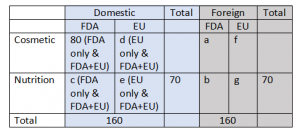
a + b + c + 80 = 200
a + b = 70
=> c = 50
=> e = 20, d = 10
Also, 80 + a = 120
=> a = 40, b = 30, g = 40, f = 50
Now, we’ll also introduce x and y which are the Domestic nutrition products having both approvals and Domestic cosmetic products having both approvals. (x+y = 60)
The final table is:

40 foreign products were FDA approved cosmetic products.
Q2. How many cosmetic products did not have FDA approval?
a. Cannot be determined
b. 10
c. 60
d. 50
Explanation :
10 domestic cosmetic and 50 foreign cosmetic products had only EU approvals, i.e., these 60 products did not have FDA approval.
Q3. Which among the following options best represents the number of domestic cosmetic products that had both the approvals?
a. At least 10 and at most 80
b. At least 20 and at most 70
c. At least 10 and at most 60
d. At least 20 and at most 50
Explanation :
50-x ≥ 0
=> x max = 50
In that case, y = 10
x min = 0
=> y = 60
So, at least 10 and at most 60.
Q4. If 70 cosmetic products did not have EU approval, then how many nutrition products had both the approvals?
a. 50
b. 10
c. 20
d. 30
Explanation :
80-y+40 = 70
=> y = 50
Since x+y = 60,
=> x = 10 nutrition products had both the approvals
Q5. If 50 nutrition products did not have EU approval, then how many domestic cosmetic products did not have EU approval?
Explanation :
Possible Answer: 50
50-x+30 = 50
=> x = 30
=> y = 30
So, 80-y = 50
Set 2 :
The two plots below show data for four companies code-named A, B, C, and D over three years – 2019, 2020, and 2021.
The first plot shows the revenues and costs incurred by the companies during these years. For example, in 2021, company C earned Rs.100 crores in revenue and spent Rs.30 crores. The profit of a company is defined as its revenue minus its costs.
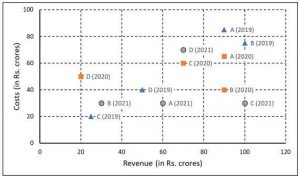
The second plot shows the number of employees employed by the company (employee strength) at the start of each of these three years, as well as the number of new employees hired each year (new hires). For example, Company B had 250 employees at the start of 2021, and 30 new employees joined the company during the year.
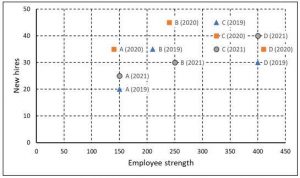
Q6. Considering all three years, which company had the highest annual profit?
a. Company A
b. Company D
c. Company C
d. Company B
Explanation :

Company C had the highest annual profit considering all 3 years.
Q7. Which of the four companies experienced the highest annual loss in any of the years?
a. Company C
b. Company A
c. Company D
d. Company B
Explanation :
Company D experienced the highest annual loss of 30 in 2020.
Q8. The ratio of a company’s annual profit to its annual costs is a measure of its performance. Which of the four companies had the lowest value of this ratio in 2019?
a. Company D
b. Company C
c. Company B
d. Company A
Explanation :
In 2019, profit/cost = performance
5/85 (Company A) is the lowest
Q9. The total number of employees lost in 2019 and 2020 was the least for:
a. Company C
b. Company B
c. Company A
d. Company D
Explanation :
Employees lost in the years 2019 and 2020 = {ES in 2020 – (ES + NH) in 2019} + {ES in 2021 – (ES + NH) in 2020} = {ES in 2021 – ES in 2019 – NH in (2019 + 2020)}
[ES = Employee Strength; NH = New Hires]
A: 150 – 150 – (20 + 35) = -55
B: 250 – 210 – (35 + 45) = -40
C: 325 – 325 – (45 + 40) = -85
D: 400 – 400 – (30 + 35) = -65
[-ve denotes loss]
The lowest loss is for Company B (40 employees).
Q10. Profit per employee is the ratio of a company’s profit to its employee strength. For this purpose, the employee strength in a year is the average of the employee strength at the beginning of that year and the beginning of the next year. In 2020, which of the four companies had the highest profit per employee?
a. Company C
b. Company B
c. Company A
d. Company D
Explanation :
A: 25/(140+150)/2 = 50/290
B: 50/(240+250)/2 = 100/490
C: 10/(325+325)/2 = 20/650
B (100/490) > A (100/580)
Hence, B had the highest profit per employee
Set 3 :
Every day a widget supplier supplies widgets from the warehouse (W) to four locations – Ahmednagar (A), Bikrampore (B), Chitrachak (C), and Deccan Park (D). The daily demand for widgets in each location is uncertain and independent of each other. Demands and corresponding probability values (in parenthesis) are given against each location (A, B, C, and D) in the figure below. For example, there is a 40% chance that the demand in Ahmednagar will be 50 units and a 60% chance that the demand will be 70 units. The lines in the figure connecting the locations and warehouse represent two-way roads connecting those places with the distances (in km) shown beside the line. The distances in both the directions along a road are equal. For example, the road from Ahmednagar to Bikrampore and the road from Bikrampore to Ahmednagar are both 6 km long.
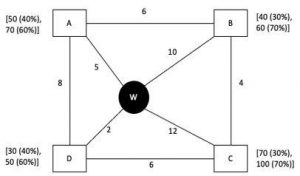
Every day the supplier gets the information about the demand values of the four locations and creates the travel route that starts from the warehouse and ends at a location after visiting all the locations exactly once. While making the route plan, the supplier goes to the locations in decreasing order of demand. If there is a tie for the choice of the next location, the supplier will go to the location closest to the current location. Also, while creating the route, the supplier can either follow the direct path (if available) from one location to another or can take the path via the warehouse. If both paths are available (direct and via warehouse), the supplier will choose the path with minimum distance.
Q11. If the last location visited is Ahmednagar, then what is the total distance covered in the route (in km)?
Explanation :
Possible Answer: 35
The last location visited is A
=> Demand at A must be 50. It can’t be 70 as then 2 locations (B and C) will definitely have a demand less than 70 and in that case, A won’t be the last location to visit as visits happen in the decreasing order of demands.
Also, demand at all other locations must be greater than or equal to 50.
So, B = 60, D = 50 and C can be either 70 or 100 which wouldn’t matter as in any case it will be the highest, and the first to be visited.
Hence, the path that will be followed is CBDA.
Distance covered = WC + CB + BWD + DWA (DWA < DA) = 12 + 4 + 12 + 7 = 35 kms
Q12. If the total number of widgets delivered in a day is 250 units, then what is the total distance covered in the route (in km)?
Explanation :
Possible Answer: 38
250 is only possible for A = 70, B = 60, C = 70, D = 50
The path followed will be ACBD (since A is closer to W than C, we took AC instead of CA)
Distance covered = WA + AWC + CB + BWD = 5 + 17 + 4 + 12 = 38 kms
Q13. What is the chance that the total number of widgets delivered in a day is 260 units and the route ends at Bikrampore?
a. 33.33%
b. 10.80%
c. 17.64%
d. 7.56%
Explanation :
We can get 260 in the following 2 ways:

But the route ends at B only in the first way.
Hence, chance = 60% x 30% x 70% x 60% = 7.56%
Q14. If the first location visited from the warehouse is Ahmednagar, then what is the chance that the total distance covered in the route is 40 km?
a. 5.4%
b. 3.24%
c. 18%
d. 30%
Explanation :
If first location is A, then chance that total distance covered is 40 km?
This is a question on Bayes’ Theorem.
A must be 70.
C will also be 70 as it can’t be 100.
So, ACBD (38 kms) or ACDB (5+17+6+12 = 40 kms)
i.e., D = 50, B = 40
Numerator = 60% x 30% x 60% x 30% = 324/104
In ACBD, BD can be (40,30), (60,50), (60,30)
i.e., in denominator we have 324/104 + 18/102 (12/102 + 42/102 + 28/102) = 1800/104
Required answer = 324/1800 = 18%
Q15. If Ahmednagar is not the first location to be visited in a route and the total route distance is 29 km, then which of the following is a possible number of widgets delivered on that day?
a. 220
b. 200
c. 210
d. 250
Explanation :
A is not the first location to be visited. Total distance covered = 29 kms
CBAD is the only possibility.
Widgets delivered = 70+60+50+30 = 210 is a possibility.
Set 4 :
A few salesmen are employed to sell a product called TRICCEK among households in various housing complexes. On each day, a salesman is assigned to visit one housing complex. Once a salesman enters a housing complex, he can meet any number of households in the time available. However, if a household makes a complaint against the salesman, then he must leave the housing complex immediately and cannot meet any other household on that day. A household may buy any number of TRICCEK items or may not buy any item. The salesman needs to record the total number of TRICCEK items sold as well as the number of households met in each day. The success rate of a salesman for a day is defined as the ratio of the number of items sold to the number of households met on that day. Some details about the performances of three salesmen – Tohri, Hokli and Lahur, on two particular days are given below.
1. Over the two days, all three of them met the same total number of households, and each of them sold a total of 100 items.
2. On both days, Lahur met the same number of households and sold the same number of items.
3. Hokli could not sell any item on the second day because the first household he met on that day complained against him.
4. Tohri met 30 more households on the second day than on the first day.
5. Tohri’s success rate was twice that of Lahur’s on the first day, and it was 75% of Lahur’s on the second day.
Q16. What was the total number of households met by Tohri, Hokli and Lahur on the first day?
Explanation :
Possible Answer: 84
Success rate of a salesman for a day = Number of items sold/Number of households met
Three salesmen – T, H, L

y + y = z + 1
=> z = 2y -1
w + w + 30 = 2y
=> w = y – 15

T’s success rate was twice that of L’s on the first day.
=> a/(y – 15) = 2(50/y)
=> ay = 100y – 1500 …….(i)
T’s success rate was 75% of L’s on the second day.
=> (100 – a)/(y + 15) = (3/4)(50/y) = 75/2y
=> 75y + 1125 = 200y – 2ay
Substitute value of ay from (i)
=> 75y + 1125 = 200y – 200y + 3000
=> y = 25, a = 40
The final tables are:

So, 10 + 49 + 25 = 84 households were met on the first day.
Q17. How many TRICCEK items were sold by Tohri on the first day?
Explanation :
Possible Answer: 40
40 TRICCEK items were sold by Tohri on the first day.
Q18. How many households did Lahur meet on the second day?
a. 20 or less
b. more than 35
c. between 30 and 35
d. between 21 and 29
Explanation :
Lahur met 25 households on the second day which is between 21 and 29.
Q19. How many households did Tohri meet on the first day?
a. more than 40
b. between 11 and 20
c. between 21 and 40
d. 10 or less
Explanation :
Tohri met 10 households on the first day, i.e., option D.
Q20. Which of the following statements is FALSE?
a. Tohri had a higher success rate on the first day compared to the second day
b. Among the three, Tohri had the highest success rate on the second day.
c. Among the three, Lahur had the lowest success rate on the first day.
d. Among the three, Tohri had the highest success rate on the first day.
Explanation :
Tohri’s success rate on 2nd day = 60/40 = 1.5
L (50/25 = 2) has a higher success rate than Tohri.
So, option B is incorrect.
Section 3 : Quantitative Aptitude
Q1. 
a. 9/2
b. -9/2
c. -4
d. 4
Explanation :
Let the roots be r, -r and t.
Sum of roots = t = -c/5
Sum of pairwise product of roots = -rt + rt – r2 = -10/5
=> r2 = 2
Product of roots = -tr2 = -9/5
=> t = 9/10
So, c = -5t = -9/2
Q2. 
a. 18
b. 16
c. 17
d. 19
Explanation :
Day 1 – 100 particles
Day 2 – 1 out of every 2 particles produces another particle. So, +50 particles
Day 3 – 1 out of every 3 particles produces another particle. So, +50 particles
We see that every day there is an increase of 50 particles.
1000 particles in (1000-100)/50 = 18 days after 1st day, i.e., in 19 days.
Q3. 
a. 4
b. 3.5
c. 4.5
d. 3
Explanation :
a + 2b = 6 (a and b are non-negative real numbers)
Minimum value that a and b can take is 0.
If a = 0, b = 3 => a+ b = 3
If a = 1, b = 2.5 => a + b = 3.5
If b = 0, a = 6 => a + b = 6
So, the average of max and min value of (a + b) = (3+6)/2 = 4.5
Q4. 
Explanation :
Possible Answer: 4
(x2 – 10)(x^2 – 3x – 10) = 1
In questions of the form ab = 1, there are basically 3 cases
i. (anything)0 = 1
ii. 1anything = 1
iii. (-1)even = 1
For (i), x2 – 3x – 10 = 0
=> x = -2, 5
For (ii), x2 = 10 but here the value of x won’t be an integer.
For (iii), x = ±3 and for both these values we get the power’s value as even.
Total 4 integer solutions.
Q5. In an election, there were four candidates and 80% of the registered voters casted their votes. One of the candidates received 30% of the casted votes while the other three candidates received the remaining casted votes in the proportion 1 : 2 : 3. If the winner of the election received 2512 votes more than the candidate with the second highest votes, then the number of registered voters was
a. 62800
b. 50240
c. 60288
d. 40192
Explanation :
Let there be total 100x registered voters. 80x casted their votes.
One candidate got 30% of 80x = 24x votes.
The remaining got 56x total votes in the ratio 1:2:3, i.e., the winner got (3/6)56x = 28x votes. And the second highest votes were 24x.
4x = 2512
So, 100x = 62800
Q6. 
a. 404
b. 415
c. 455
d. 442
Explanation :
1/25 (3 + 10 + 21 +……25 terms)
The common difference is in AP.
Let the general term be an2 + bn + c
T1 = a + b + c = 3
T2 = 4a + 2b + c = 10
T3 = 9a + 3b + c = 21
On solving, c = 0, a = 2, b = 1
So, (1/25)Σ(2n2 + n)
= 1/25[{2(n)(n+1)(2n+1)/6}+{(n)(n+1)/2}]
= 1/25[(2.25.26.51/6)+(25.26/2)]
= 455
Q7. 
Explanation :
Possible Answer: 12
f(x) + f(x – 1) = 1; g(x) = x2
f(x2 – x) = 5
f(g(5)) + g(f(5)) = ?
g(5) = 25
So, we just need to find the value of f(25) + g(f(5))
f(6) + f(5) = 1 & f(32 – 3) = f(6) = 5
=> f(5) = -4
=> g(f(5)) = 16
f(5) + f(4) = 1
=> f(4) = 5
We see a pattern for the value of f(x): 5, -4, 5,….
So, f(25) = -4
Hence, f(g(5)) + g(f(5)) = -4 + 16 = 12
Q8. Five students, including Amit, appear for an examination in which possible marks are integers between 0 and 50, both inclusive. The average marks for all the students is 38 and exactly three students got more than 32. If no two students got the same marks and Amit got the least marks among the five students, then the difference between the highest and lowest possible marks of Amit is
a. 24
b. 22
c. 21
d. 20
Explanation :
5 students. Marks: [0, 50]
Total sum of marks of 5 students = 38 x 5 = 190
3 students got more than 32. All students have distinct marks. Amit got least of all the 5 students.
Case 1: Highest possible marks of Amit
Since he got the lowest marks of all the 5, he definitely cannot be one of the 3 students who got more than 32.
The max marks he can get is 31.
Case 2: Lowest possible marks of Amit
For this, we will maximize the marks of the 3 students who got more than 32. This will be 48+49+50
Remaining marks = 190-147 = 43
To minimize Amit’s marks, the other person who did not get more than 32 marks should have got exactly 32 (max)
And 43-32 = 11 are Amit’s marks.
So, difference = 31 – 11 = 20
Q9. Manu earns ₹4000 per month and wants to save an average of ₹550 per month in a year. In the first nine months, his monthly expense was ₹3500, and he foresees that, tenth month onward, his monthly expense will increase to ₹3700. In order to meet his yearly savings target, his monthly earnings, in rupees, from the tenth month onward should be
a. 4350
b. 4300
c. 4400
d. 4200
Explanation :
Earning 4000 pm
Aspired savings 550 pm, i.e., 550×12 = 6600 per year
Savings in first 9 months = 9(4000 – 3500) = 4500
To achieve the sum of 6600, the sum of savings in the remaining 3 months should be 6600 – 4500 = 2100. i.e., 700 pm
Let his per month earnings in the last 3 months be x.
=> x – 3700 = 700
=> x = 4400
Q10. Working alone, the times taken by Anu, Tanu and Manu to complete any job are in the ratio 5 : 8 : 10. They accept a job which they can finish in 4 days if they all work together for 8 hours per day. However, Anu and Tanu work together for the first 6 days, working 6 hours 40 minutes per day. Then, the number of hours that Manu will take to complete the remaining job working alone is
Explanation :
Possible Answer: 6
Time taken by A, T, M to complete a job are in ratio 5:8:10
Working 8 hrs per day for 4 days, they complete the work. Let work done per hour be 1/5x, 1/8x and 1/10x
=> 32(1/5x + 1/8x + 1/10x) = 1
=> x = 68/5
A and T work together for 6 days working 20/3 hours per day, i.e., 40 hours.
Work left = 1 – 40(1/5x + 1/8x) = 1 – 13/x = 3/68
M will take (3/68)/(1/68×2) = 6 hours
Q11. There are two containers of the same volume, first container half-filled with sugar syrup and the second container half-filled with milk. Half the content of the first container is transferred to the second container, and then the half of this mixture is transferred back to the first container. Next, half the content of the first container is transferred back to the second container. Then the ratio of sugar syrup and milk in the second container is
a. 6 : 5
b. 4:5
c. 5:4
d. 5:6
Explanation :
Let the capacity of the containers be 16 lt each.
1st: 8 lt sugar syrup
2nd: 8 lt milk
First operation: (8-4 = 4 lt ss), (8 lt milk + 4 lt ss)
Second operation: (4+2 = 6 lt ss + 4 lt milk), (4 lt milk + 2 lt ss)
Third operation: (3 lt ss + 2 lt milk), (6 lt milk + 5 lt ss)
Ratio of ss : milk in 2nd container = 5 : 6
Q12. 
a. 12
b. 36
c. 6
d. 24
Explanation :
f(x) ≥ 0
f(2) = 0, f(4) = 6
We have to find f(-2)
f(2+2) = f(2-2) i.e., f(4) = f(0) = 6 as the graph is symmetric about f(x) = 0
Let f(x) = ax2 + bx + c
f(0) = c = 6
f(-2) = f(6) = 36a + 6b + 6
4a + 2b + c = 0; 16a + 4b + c = 6
Subtracting the two equations, we get 12a + 2b = 6
So, f(-2) = 36a + 6b + 6 = 3(6) + 6 = 24
Q13. 
a. 5
b. 6
c. 4
d. 7
Explanation :
15000! = 15000 x 14999 x 14998 x …….. – (i)
From the options, the largest value is 7. We will check for that.
7! = 5040
5040! = 5040 x 5039 x ….. – (ii)
And (i) will definitely have (ii) as its multiple.
So, 7 is the answer.
Q14. Two ships meet mid-ocean, and then, one ship goes south and the other ship goes west, both travelling at constant speeds. Two hours later, they are 60 km apart. If the speed of one of the ships is 6 km per hour more than the other one, then the speed, in km per hour, of the slower ship is
a. 18
b. 24
c. 20
d. 12
Explanation :
Let the speeds of the ships be x and x+6 kmph
We have a right-angle triangle with perpendicular sides as 2x and 2(x+6), and hypotenuse as 60.
Applying Pythagoras theorem, we get x = 18
Q15. In an examination, there were 75 questions. 3 marks were awarded for each correct answer, 1 mark was deducted for each wrong answer and 1 mark was awarded for each unattempted question. Rayan scored a total of 97 marks in the examination. If the number of unattempted questions was higher than the number of attempted questions, then the maximum number of correct answers that Rayan could have given in the examination is
Explanation :
Possible Answer: 24
Let the number of correct, wrong, and unattempted questions be a, b and c respectively.
a + b + c = 75 ….(i)
3a – b + c = 97 ….(ii)
(ii) – (i)
=> a – b = 11 ……(iii)
c > a + b
We have to find the max value of a. For that, a + b should be max
=> c = 38 and a + b = 37 …….(iv)
(iii) + (iv)
=> a = 24
Q16. The number of integers greater than 2000 that can be formed with the digits 0, 1, 2, 3, 4, 5, using each digit at most once, is
a. 1420
b. 1480
c. 1200
d. 1440
Explanation :
Using 0,1,2,3,4,5 at most once, we have to find number of integers greater than 2000.
Case 1: 4-digit numbers
1st digit can take 4 values i.e., 2,3,4,5.
2nd digit can take 6 – 1 = 5 values
3rd and 4th digits can take 4 and 3 values.
Total 4-digit numbers = 4x5x4x3 = 240
Case 2: 5-digit numbers
5x5x4x3x2 = 600
Case 3: 6-digit numbers
5x5x4x3x2x1 = 600
Total = 240+600+600 = 1440
Q17. 
a. 1
b. c.
c. 
d. 
Explanation :
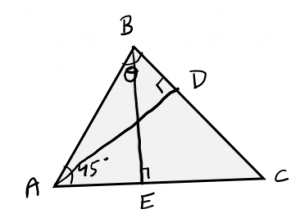
Let BE = 1
In △ABE, ∠ABE = 45º
So, AE = BE = 1
=> AB = √2
In △ABD, sin θ = AD/AB
=> AD = √2 sin θ
=> AD/BE = √2 sin θ
Q18. 
Explanation :
Possible Answer: 14
Sum = 300N
5a1 = 400N – 300N = 100N
=> a1 = 20N
If N is 1, that means there’s only one term and its value will be 20. The average is not 300. So, N = 1 is not possible.
All the other values of N starting from 2 to 15 are possible. At N = 15, a1 = 300. All the remaining 14 terms can be 300.
When a1 becomes 6×300 = 1800, the excess 1500 gets equally distributed among the 15 terms to increase the average by 100.
Hence, 2 to 15 = 14 values
Q19. Mr. Pinto invests one-fifth of his capital at 6%, one-third at 10% and the remaining at 1%, each rate being simple interest per annum. Then, the minimum number of years required for the cumulative interest income from these investments to equal or exceed his initial capital is
Explanation :
Possible Answer: 20
Let total Capital be 15x (We took this number because 1/3 and 1/5 of this will be easy)
Investment: 3x at 6%, 5x at 10%, 7x at 1% SI PA
1 year interest = 0.18x + 0.5x + 0.07x = 0.75x
Let it take t years for interest to equal or exceed 15x
t = 15x/0.75x = 20 years
Q20. 
a. √6
b. √8
c. √5
d. √7
Explanation :
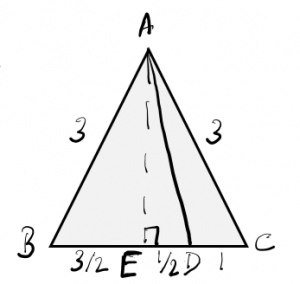
Ar(△ABD)/Ar(△ADC) = 2/1
=> BD : DC = 2 : 1 as height is same
BE = EC = 3/2
So, ED = 3/2 -1 = ½
In right △AEB, AE2 = AB2 – BE2 = 27/4
In right △AED, AD2 = AE2 + ED2 = 27/4 + 1/4 = 7
So, AD = √7
Q21. Regular polygons A and B have number of sides in the ratio 1 : 2 and interior angles in the ratio 3 : 4. Then the number of sides of B equals
Explanation :
Possible Answer: 10
Interior angle of a polygon = (n – 2)180/n, where n is the number of sides.
Let polygon A and B have a and 2a sides respectively.
=> 2(a – 2)/(2a – 2) = 3/4
=> 4a – 8 = 3a – 3
=> a = 5
So, B has 2a = 10 sides.
Q22. 
Explanation :
Possible Answer: 47
(4 – log2 n)/(3 – log4 n) < 0
We have to find the number of distinct integer values of n.
(4 – log2 n)/(3 – log4 n) = log2 (16/n)/log4 (64/n)
=> (log 16 – log n)/(log 64 – log n) < 0
a/b < 0 if a > 0 and b < 0 or a < 0 and b > 0
If a > 0, n = 1 to 15 but for these values, we won’t get b < 0
If b > 0, n = 1 to 63
And a < 0 for n = 17 to 63 i.e., 47 values.
For a structured CAT preparation and one-on one counselling, visit the link below.
To join India’s largest CAT preparation community and for free 24*7 doubt clarification, join the group linked below.

